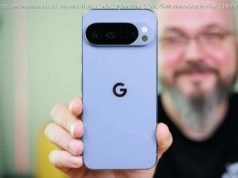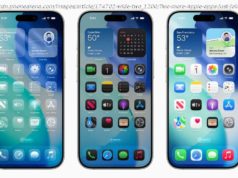The chips! The cameras! The colours! The faintly frightening prices!
Tim Cook came, he saw, he said “magical” a few times and made everybody sit through a bunch of videos. Yep, it’s the annual iPhone extravaganza, and this year we had not one but three new iPhones to choose from – the iPhone XS, iPhone XS Max, and iPhone XR.
Most of the basic details had already leaked but there were still some surprises, such as the performance of the A12 Bionic processor, the new things the camera can do and the fact that the budget iPhone, the iPhone XR, is actually a really powerful device. Here are the key things you need to know about today’s iPhone XS and XR launch event.
The iPhone XS is not the “Ex Ess” as you’d expect; it’s the “Ten Ess” – which means the big-screened version is the “Ten Ess Max” and the little one is the “Ten Arr”, which is great news for anybody sporting an eye-patch, peg leg and a parrot on their shoulders.
The range shapes up like this. iPhone XS is the flagship, and the XS Max is the bigger version for power users. iPhone XR is the more fashionable, slightly more affordable option. Pricewise the phones start at $749 (£749/AU$1,229) for the XR, $999 (£1,000, AU$1,579) for the XS and $1099 (£1,099, AU$1,799) for the XS Max.
The A12 Bionic processor enables “one trillion operations on every photo you take”, improving portraits and HDR shots, offering better face and body detection and carrying out improved scene analysis. The new Smart HDR combines a four-second shooting buffer, secondary shots at higher exposure levels for highlights and longer exposure for better shadows and then combines them into a single image. If it’s as good as it looks in the demos, and we think it will be, your shots will be even better than ever before.
The A11 in the iPhone X smoked the competition, but the A12 Bionic is an even more exciting proposition: its cores demand 40-50% less power while the performance cores run 15% faster. Apps launch 30% faster and the processor can now address up to 512GB of internal storage. The Neural Engine offers real-time machine learning for the camera app and for augmented reality apps, which Apple clearly thinks are going to be a big deal, and the Core ML framework enables developers to use machine learning with 1/10th of the energy consumption and 9x the speed.
One of the most impressive new features was almost an afterthought: during the section on the Neural Engine, we saw AR Quick Look. It’s a simple idea that could be huge: tap on an image of a supported 3D object in Safari and you can see it in the real world thanks to the magic of augmented reality, so for example you can see immediately what that coffee machine would look like on your kitchen worktop. We’ve seen retailer-specific apps that do something similar from the likes of IKEA, but having it as a system feature is potentially huge.
Many pundits predicted that 3D Touch was going to be binned with the launch of the iPhone XS, but no! Both it and the larger-screened iPhone XS Max include 3D Touch as standard. If 3D Touch really is going to be removed from iOS devices, it’s not happening in 2018.
That’s not to say that 3D Touch isn’t flawed. It is: it isn’t across all devices, so for example it doesn’t work on iPad, so that means developers can’t assume it’s going to be in every device. But it’s a useful feature to have, especially when it provides quick shortcuts to commonly-used features.
The 5.8-inch display in the iPhone XS gives you more display size than the iPhone 8 Plus without making you carry a giant tablet around. It’s 2,436 x 1,125 pixels at a density of 458 ppi, and it’s dust and liquid protected to IP68. Even the iPhone XR manages to up its LCD to 6.1” with super-slim bezels.
The larger iPhone XS Max keeps the same statistics but the actual display is larger: 6.5 inches compared to 5.8 inches. Both versions of the display are OLED with one million to one contrast, True Tone and wide color support for accurate color reproduction.
The iPhone XS and XS Max have DSDS, which is short for Dual Sim Dual Standby. It enables you to have two SIMs – one with a physical SIM and one with an eSIM – so that you can use two accounts simultaneously: to have home and work numbers on the same device, or to use a separate network plan when you’re abroad from the one you usually use at home. eSIM support depends on the carriers, but with big names such as Vodafone on board that shouldn’t be a problem. There will be a special dual-SIM version in China.
No, it doesn’t have an OLED display like its siblings. But the iPhone XR is no Tesco Value effort. The 6.1” LCD is perfectly nice and very big by iPhone standards, and inside you get exactly the same A12 Bionic processor as the flagship models. That means the same True Depth camera system, the same Face ID, the same pro-level camera features, the same wide stereo sound, the same power for Augmented Reality apps and games. For many people, it’s going to seem like a bargain compared to the XS and XS Max.
While the iPhone XR comes with the familiar 64/128/256GB storage capacities, the iPhone XS and iPhone XS Max come with even more: 64/128 or an unprecedented 512GB of on-board storage. That’s good for tens of thousands of photos, although of course it’s also going to be hilariously expensive: while the iPhone XS starts at $999 and the XS Max at $1,099, upping the storage from 64GB to 512GB also ups the price by $350. And you’re still stuck with just 5GB of free iCloud storage.
Pre-orders start on 14 September at 8.01am and you’ll be able to pick up from the Apple Store on the 21st. As ever with new iPhone launches there’s likely to be some friction with deliveries from third parties such as mobile phone networks, who’ll have limited supplies: the most popular configurations and colors are likely to sell out quickly. If history is any indication the best bet will be to arrange an Apple Store pickup or order direct from Apple, although of course that’s not an option if you’re buying on contract.






